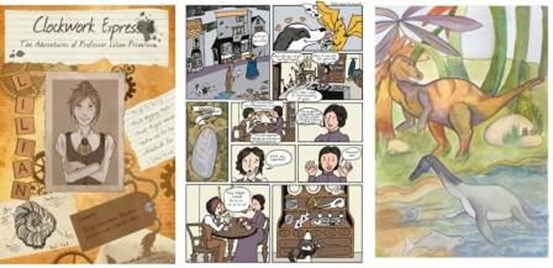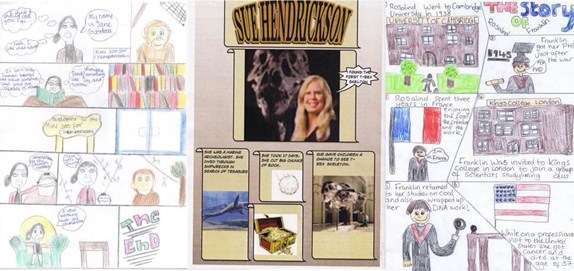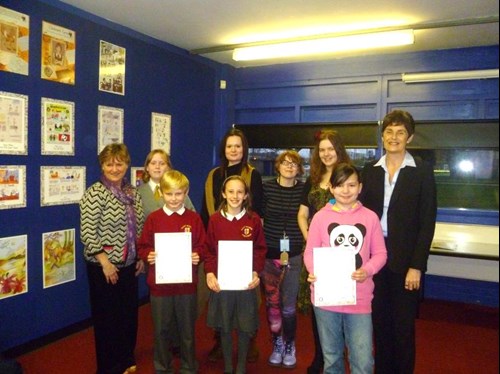Group Size
?
1.) Small group (teams of 4-6)
2.) Individual Task
3.) Large Group
4.) Any
Small group (teams of 4-6)
Learning Environment
?
1.) Lecture Theatre
2.) Presentation Space
3.) Carousel Tables (small working group)
4.) Any
5.) Outside
6.) Special
Special
QAA Enterprise Theme(s)
?
1.) Creativity and Innovation
2.) Opportunity recognition, creation and evaluation
3.) Decision making supported by critical analysis and judgement
4.) Implementation of ideas through leadership and management
5.) Reflection and Action
6.) Interpersonal Skills
7.) Communication and Strategy
1Creativity and Innovation
2Opportunity recognition‚ creation and evaluation
3Decision making supported by critical analysis and judgement
4Implementation of ideas through leadership and management
5Reflection and Action
6Interpersonal Skills
7Communication and Strategy
Illustration students at Glyndwr University engage in ‘Negotiated Study’ modules in the final year of their undergraduate programme, engaging in real-world projects to develop their portfolio and equip them for the labour market. The nature of the creative sector entails that the vast majority of illustration graduates will encounter self-employment during their careers, and so well developed enterprising behaviours, and a strong entrepreneurial mind-set, are essential to their future success.
In 2011, three such students who had developed their own educational comic book ‘Clockwork Express’, partnered with science discovery centre Techniquest Glyndwr to develop their product, engage with its target audience, and to test the market. The project saw the students develop a wide range of enterprising behaviours, having to create ideas and identify opportunities, design and manage a multi-faceted project, respond to problems and moving parameters in real time, communicate effectively and establish numerous professional relationships, and work in a high pressure, uncertain environment.
The project took the form of a comic book competition for school pupils, preceded by educational workshops, and succeeded by a public art exhibition.
It was a success, and served to propel the students on their chosen career paths.
The project comprised of the development of original artwork and literature in the form of ‘Clockwork Express,’ and educational comic promoting positive female role-models to children, the concept for which had been developed by the group of students throughout their previous years of academic study. This was supported by the delivery of educational outreach throughout regional schools, and a multi-schools competition, eligible to all 8 – 12 year olds and inviting them to create their own original comic art inspired by the lives and achievements of female scientists.
The project was instigated by the students during the 2011 summer vacation, and culminated on International Women’s Day 2012.
The chronology of the project’s development was as follows;
1. Planning (Summer 2011 – September 2011)
2. Promotion and Securing Schools Involvement (3rd October – 25th November)
3. Development of Artistic Product and CPD (September 2011 – December 2011)

Figure 1: Original Artworks created for the 'Clockwork Express' comic
4. Confirmation of Participating Schools and Competition Packs (December 2011)
5. Educational Outreach (January 2012 – March 2012)
6. Competition (January 2012 – March 2012)

Figure 2: Competition Entries from School Pupils
7. Exhibition (8th – 31st March)

Figure 3: School pupils receiving certificates at exhibition opening
8. Evaluation
In total, over 1,950 people visited the exhibition of work created by the students and school pupils, and over 320 school pupils participated in the students’ outreach workshops.
To assess the quality of their work, the students gathered evaluation via forms, qualitative feedback, and consultation with participants throughout the projects duration.
Aim – “to use art as a means to promote female role models in traditionally male dominated fields, amongst 8 to 12 year olds in North East Wales”
Aim - “to encourage children to create their own original art works and literature, providing opportunity for these being put into print and on public display”
Aim – “to promote and focus group the magazine ‘Clockwork Express’ and the use of sequential art to support broader curriculum areas and after school reading”
Partner feedback included;
The students reported finding the project a real challenge, yet a worthwhile and rewarding one.
The broad scope of the project far outstretched the requirements of their academic assessment, and allowed the students to test a product which they were passionate about, with its’ target audience in a real environment.
Many aspects of the project brought the students out of their comfort zone (from presenting workshops to school children, to conducting interviews with the press), and all found great confidence, and exceeded their own expectations with regards to their achievements.
The evaluation and final reporting of the project formed the basis of a paper, which was delivered by the students at national academic conferences on comics in education.
The students built upon the experience of the project in the development of their own careers thereafter.
With thanks to the North Wales School of Art and Design, Glyndwr University, to Techniquest Glyndwr, and to the fantastic students who led the project.